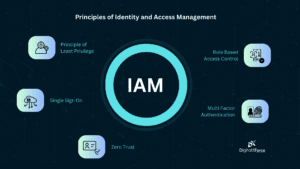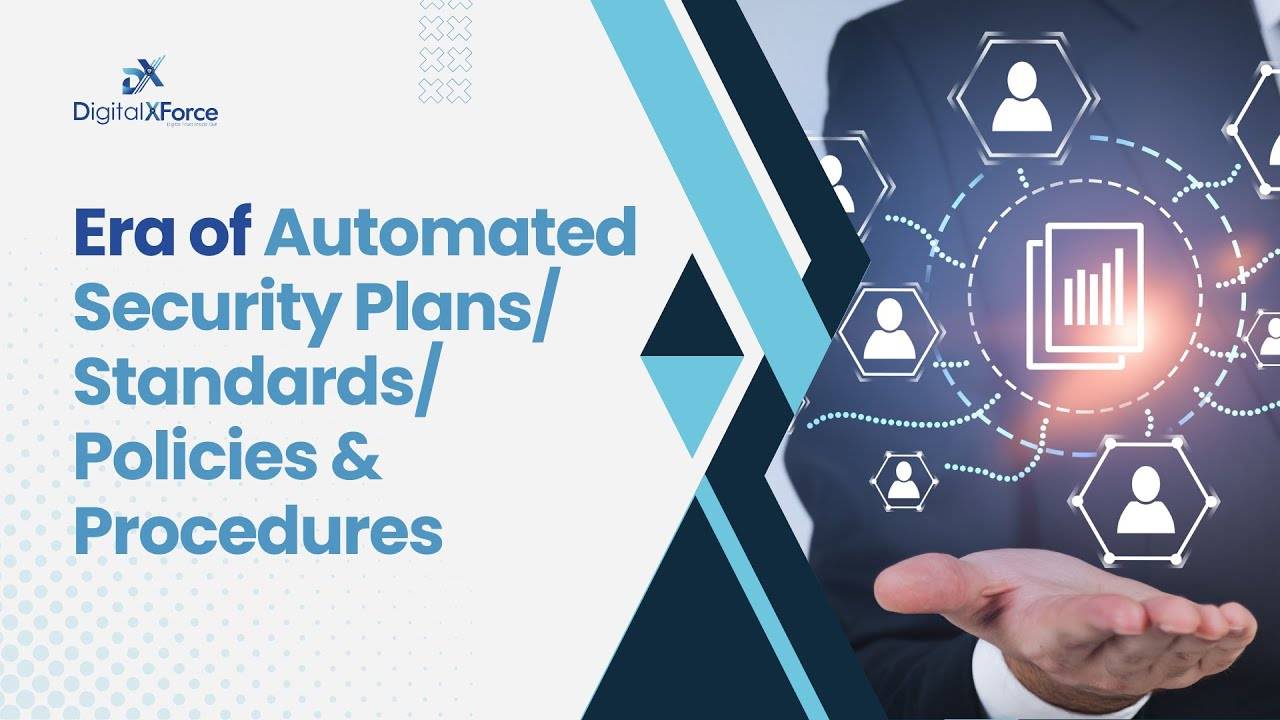
In today’s digital landscape, where cyber threats lurk around every corner, the old “castle-and-moat” approach to security just doesn’t cut it anymore. As cyber threats evolve, so must our defenses. Zero Trust Architecture – the new sheriff in town that’s turning traditional security models on their heads – is a paradigm shift that redefines how we think about network security.
At the heart of this model lies Identity Access Management (IAM), a critical component that ensures only the right individuals have access to the right resources at the right times. This article delves into the core principles of IAM and its pivotal role in implementing a zero-trust security model.
But Wait, Why Zero Trust?
Before we get into the nitty-gritty, let’s set the stage. Zero Trust is all about “never trust, always verify.” It’s like being that friend who always asks for ID at the door – even if they’ve known you for years. Paranoid? Maybe. Effective? Absolutely.
According to a report by Statista, “the global zero trust market is expected to be worth nearly 133 billion U.S. dollars by 2032, up from around 32 billion U.S. dollars in 2023. Check out the perks. A Cisco survey reveals that “organizations completing all zero trust pillars are two times less likely to report incidents—from 66% to 33%.”

Let’s dig deeper to understand how IAM fits into this picture and why it’s the unsung hero of Zero Trust security.
The Core Principles of IAM
At its heart, Identity and Access Management is about ensuring the right people have access to the right resources at the right time. Sounds simple, right? In practice, it’s a bit like juggling flaming torches while riding a unicycle – challenging, but super important.
The core principles of IAM are:
- Identification: Who are you?
- Authentication: Prove it’s really you.
- Authorization: Here’s what you’re allowed to do.
- Auditing: We’re keeping an eye on what you do.
These core principles form the backbone of any solid IAM strategy. They’re like the four pillars holding up the roof of your security house. Without them, everything comes crashing down.

Integration of IAM in Zero Trust Model
IAM and Zero Trust are like peanut butter and jelly – they just work better together. In a Zero Trust model, every access request is treated as if it originates from an untrusted network. It’s like assuming everyone’s a potential threat until proven otherwise. Harsh, but very necessary.
IAM steps in as the bouncer at this exclusive Zero Trust club. It’s responsible for verifying the identity of users, devices, and applications before granting access. It’s not just about keeping the bad guys out; it’s about making sure the good guys are who they say they are.
By integrating IAM into Zero Trust, organizations can implement granular access controls, enforce least privilege principles, and maintain continuous visibility into who’s accessing what. It’s like having a super-powered security camera that not only sees everything but also makes real-time decisions about who gets in and who doesn’t.
Continuous Authentication and Authorization
In the world of Zero Trust, authentication isn’t a one-and-done deal. It’s an ongoing process, kind of like a never-ending game of “Simon Says.”
Continuous authentication means constantly verifying the user’s identity throughout their session. It’s like having a security guard who doesn’t just check your ID at the door but keeps asking for it every time you move to a different room.
Authorization, on the other hand, is about what you’re allowed to do once you’re in. In a Zero Trust model, this is also continuous. Your permissions are constantly re-evaluated based on various factors like your location, device, and behavior.
This dynamic duo of continuous authentication and authorization ensures that even if a bad actor manages to sneak in, they won’t get far. It’s like having a security system that not only locks the doors but also keeps an eye on everyone inside.
Role-Based Access Control (RBAC)
Role-Based Access Control is like assigning parts in a play. Each actor (user) gets a specific role, and that role determines what they can do on stage (in the system).
In the context of Zero Trust and IAM, RBAC allows organizations to define access permissions based on job functions. It’s a way of ensuring that employees only have access to the resources they need to do their job – nothing more, nothing less.
For example, a marketing intern doesn’t need access to the company’s financial records, just like the CFO doesn’t need access to social media accounts. RBAC helps maintain this separation of duties, reducing the risk of unauthorized access and potential data breaches.
Multi-Factor Authentication (MFA)
If single-factor authentication is like having a simple lock on your door, multi-factor authentication is like having a lock, a retinal scanner, and a secret handshake.
MFA requires users to provide two or more verification factors to gain access to a resource. These factors typically fall into three categories:
- Something you know (like a password)
- Something you have (like a smartphone)
- Something you are (like a fingerprint)
In a Zero Trust model, MFA is not just recommended – it’s essential. It adds layers of security that make it exponentially harder for unauthorized users to gain access, even if they manage to compromise one factor.
Identity Federation and Single Sign-On (SSO)
Identity federation is like having a universal passport that’s accepted everywhere. It allows users to access multiple applications or systems using a single set of credentials.
Single Sign-On, on the other hand, is the process that makes this possible. It’s like having a magic key that opens all the doors you’re allowed to enter, without needing to fumble for a different key each time.
In a Zero Trust environment, federation and SSO play a crucial role in maintaining security while improving user experience. They reduce the number of credentials users need to remember (and potentially lose or compromise), while still ensuring that each access request is properly authenticated and authorized.
Privileged Access Management (PAM)
Privileged Access Management is like handling the keys to the kingdom. It focuses on securing, controlling, and monitoring access to critical assets.
In the Zero Trust model, PAM is particularly important because it deals with the most sensitive access rights – those that could do the most damage if compromised. It’s about ensuring that even the most privileged users are continuously verified and monitored.
PAM implements principles like least privilege (giving users the minimum level of access they need) and just-in-time access (granting elevated privileges only when needed and for a limited time). It’s like having a vault within a vault, with extra security measures for the most valuable assets.
Device Identity and Management
In a world where employees might be working from office desktops, home laptops, or mobile devices, managing device identities is crucial. It’s not just about who you are, but also what you’re using to access resources.
Device identity management in a Zero Trust model involves:
- Device registration and authentication
- Health checks to ensure devices meet security standards
- Continuous monitoring of device behavior
It’s like having a bouncer who not only checks your ID but also makes sure you’re wearing the right clothes and behaving appropriately before letting you into the club.
5 Reasons to Implement IAM in a Zero Trust Security Model
Here are five reasons that’ll make you want to jump on the IAM bandwagon right now:
- Enhanced Security: By continuously verifying identities and enforcing the least privileged access, IAM significantly reduces the attack surface. It’s like having a shield that not only deflects attacks but actively shrinks to give attackers less to aim at.
- Improved Compliance: Many regulatory standards require strict access controls and audit trails. IAM in a Zero Trust model helps organizations meet these requirements effortlessly. It’s like having a compliance officer built into your security system.
- Better User Experience: Despite the stringent security measures, features like SSO can improve the user experience by reducing password fatigue. It’s like having fort-knox level security that feels as easy as walking through an open door.
- Increased Visibility: IAM provides detailed insights into who’s accessing what, when, and from where. This visibility is crucial for detecting and responding to threats. It’s like having x-ray vision into your entire IT infrastructure.
- Adaptability to Modern Work Environments: With remote work and cloud services becoming the norm, IAM in a Zero Trust model provides the flexibility and security needed to support these modern work environments. It’s like having a security system that works just as well for a distributed workforce as it does for a traditional office setup.
Final Words
Identity Access Management is not just a component of Zero Trust Architecture – it’s the glue that holds it all together. It’s the difference between a security strategy that hopes for the best and one that actively prepares for the worst.
By implementing robust IAM practices within a Zero Trust framework, organizations can create a security posture that’s resilient, adaptive, and ready to face the challenges of our increasingly digital world. So, are you ready to trust no one and secure everything? With IAM and Zero Trust, you’ll be well on your way to a safer, more secure digital future.



